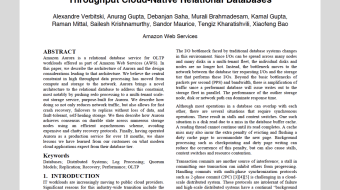Customer-obsessed science


Research areas
-
September 26, 2025To transform scientific domains, foundation models will require physical-constraint satisfaction, uncertainty quantification, and specialized forecasting techniques that overcome data scarcity while maintaining scientific rigor.
-
Featured news
-
arXiv2024The peptide-protein docking problem is an important problem in structural biology that facilitates rational and efficient drug design. In this work, we explore modeling and solving this problem with the quantum-amenable quadratic unconstrained binary optimization (QUBO) formalism. Our work extends recent efforts by incorporating the objectives and constraints associated with peptide cyclization and peptide-protein
-
2024Natural language understanding over tabular data is crucial for data discovery tasks such as joinable and unionable table search. State-of-the-art approaches adopt large language models (LLMs) trained over massive text corpora to assess the table semantic relatedness, typically following a pretrain-and-finetune paradigm with labeled tabular data. Recent studies in-corporate auxiliary tasks such as entity
-
2024Chain-of-thought (CoT) prompting is a popular in-context learning (ICL) approach for large language models (LLMs), especially when tackling complex reasoning tasks. Traditional ICL approaches construct prompts using examples that contain questions similar to the input question. However, CoT prompting, which includes crucial intermediate reasoning steps (rationales) within its examples, necessitates selecting
-
RecSys 2024 Workshop on Design, Evaluation and Deployment of Robust Recommender Systems2024In the realm of sequential recommender systems, understanding users’ preferences based on their past actions is paramount. Yet, the susceptibility of these models to input perturbations has limited their practicality. Addressing this, we present an innovative approach to mitigate the impact of missing input items, a challenge that has been overlooked. Our method involves a novel training process that anticipates
-
2024We study the differences arising from merging predictors in the causal and anti-causal directions using the same data. In particular we study the asymmetries that arise in a simple model where we merge the predictors using one binary variable as target and two continuous variables as predictors. We use Causal Maximum Entropy (CMAXENT) as inductive bias to merge the predictors, however, we expect similar
Collaborations
View allWhether you're a faculty member or student, there are number of ways you can engage with Amazon.
View all














































